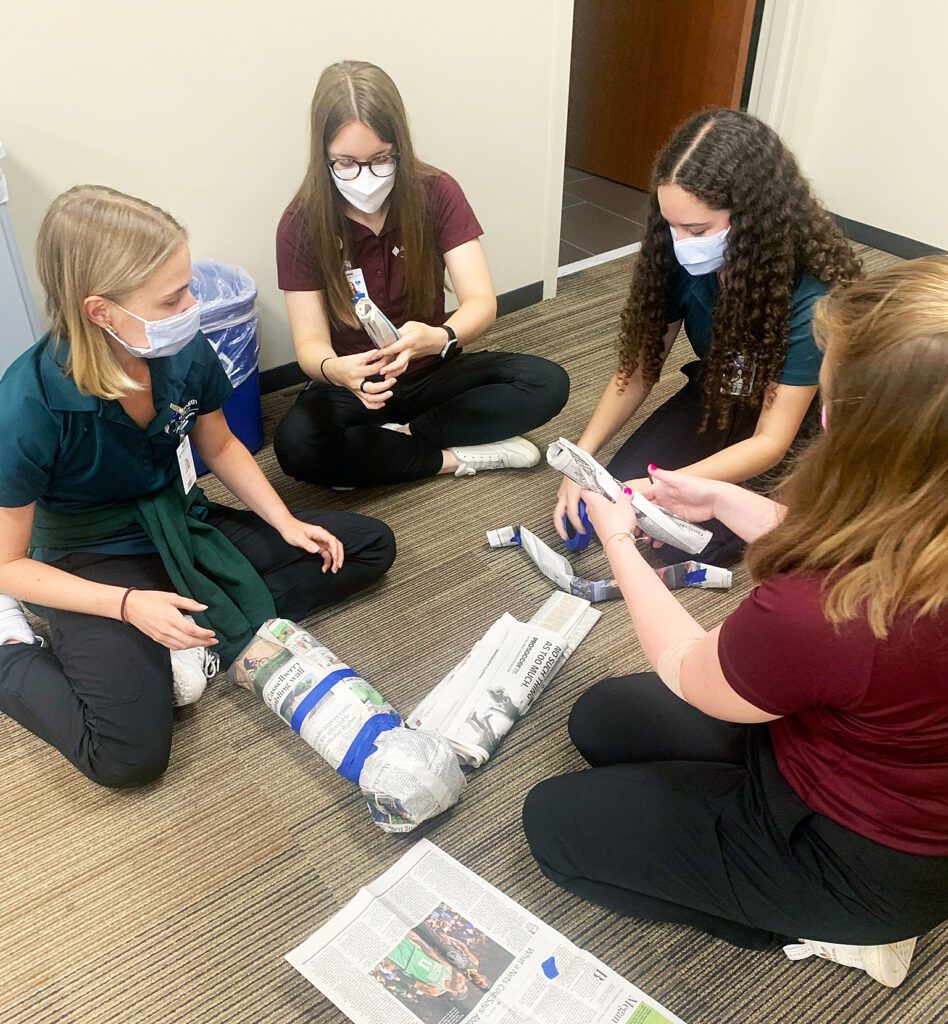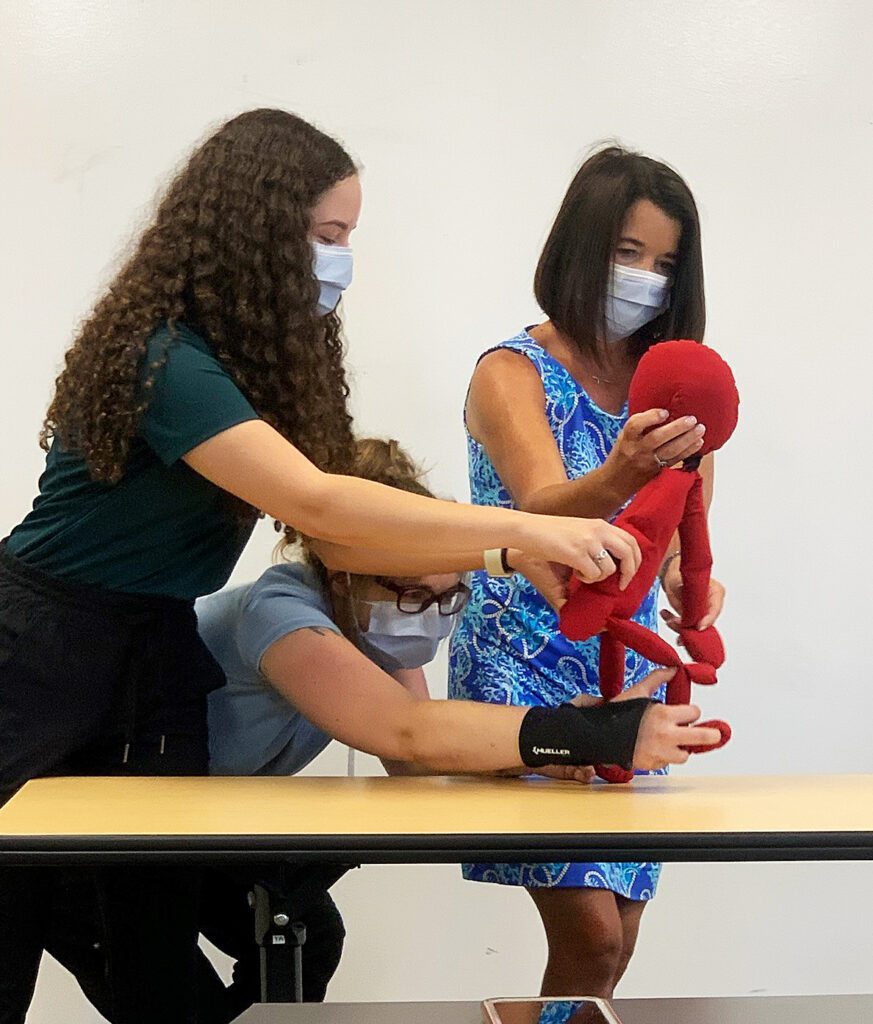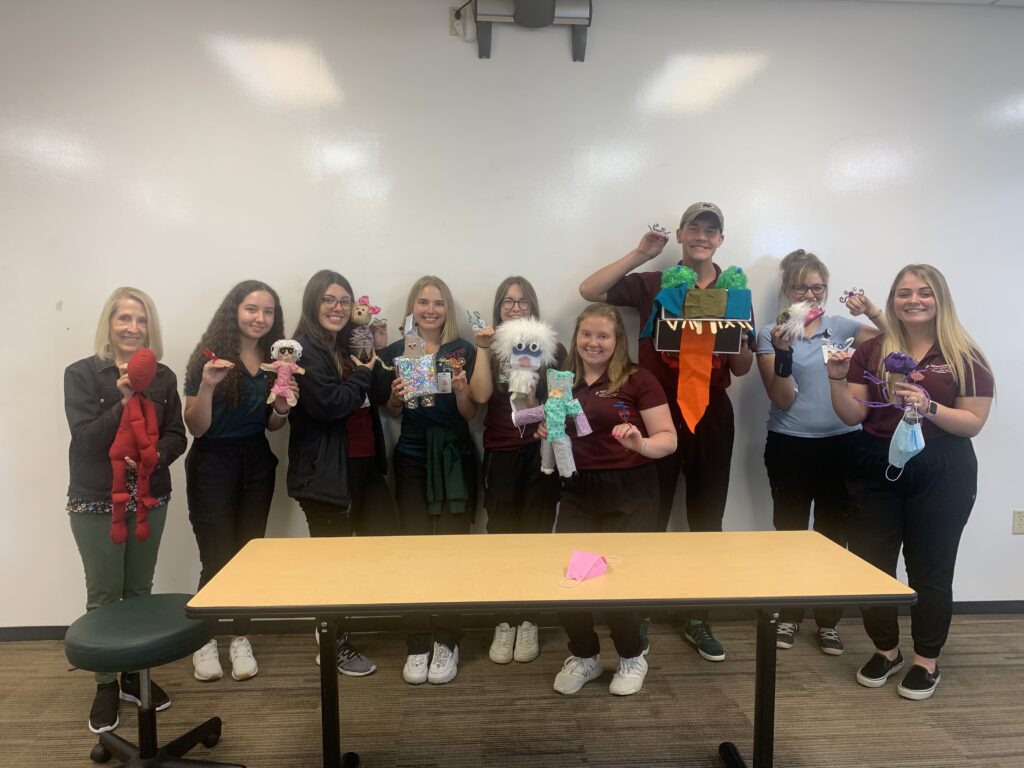University Students Learn to Use Puppetry for Occupational Therapy
by KRISTEN GUEVARA
“Everyone loves puppets!” exclaims Angela Sampson.
She should know. Sampson uses them not only in her job as a pediatric occupational therapist but also as she and other professors equip the next generation of occupational therapy assistants at AdventHealth University in Orlando.
Each trimester, AdventHealth University’s Occupational Therapy Assistant program brings in a puppeteer to teach students the benefits of using puppets with patients. Students create the puppet from scratch, using found materials and taking into consideration what a patient might like to see. Tracey Conner, executive director of MicheLee Puppets in Orlando, shares her puppetry expertise and tips with the students in lessons that pay off long after class has ended.
Sampson and other professors say puppets not only bring joy to patients but also move the pressure and focus from patient to puppet, allowing a therapist to gain insight and teach necessary skills for development. For a child or neurodiverse individual, expressing what emotion they are feeling can be intimidating, and often, they may not even know what they are truly experiencing inside. A puppet can be an icebreaker and a stand-in to facilitate an informative interaction between a therapist and a patient while also making interactions fun.
In Occupational Therapy, patients learn how to develop physical, emotional, and social skills so they can perform daily activities following a procedure or accident or as a result of a disorder, illness, or birth defect. Occupational therapists, for example, use puppets to help pediatric and neurodiverse patients express or regulate emotions, practice social skills, face fears, and so much more. Even adult patients can relate to puppets, Sampson says.
“There are certain developmental ages where children play with stuffed animals and do a lot of pretending,” Sampson says. “They use dolls and teddy bears, and those things are very lifelike for them. They will use puppets just like those objects to communicate how they are feeling without even realizing they are doing it. They may have a conversation between two puppets and tell you the puppet is feeling sick or point out where the puppet is hurting. While they may not be able to articulate directly what they are feeling, they can use the puppet to show their therapist how they feel without intentionally saying it about themselves.”
Students say puppets can help identify where and how patients are in need of therapy in a fun, safe, and comfortable way.
“Oftentimes, physical struggles can lead to emotional struggles, and puppets can be the key to open the door to that discovery,” says Lane Moore, an occupational therapy assistant student at AHU. “If a patient is unable to open a door for example, how might that make them feel, emotionally?”
The puppets also can act as a third-party buffer.
“Puppets can help occupational therapists simulate situations that may cause fear or anxiety for children and neurodiverse patients, such as going to the dentist or getting a haircut,” Sampson explains. “Sitting in a dentist’s chair, for example, having someone in their personal space, touching them, and seeing new tools can frighten them. However, seeing a puppet sit in a chair and experience a hypothetical dentist visit can ease those patients’ feelings.”
In addition, she continues, puppets can be used to help patients with motor skills.
“If patients have goals for self-feeding, meaning that they can hold a spoon, scoop the food, and bring it to their mouth, sometimes they don’t want to do that for themselves but if they have a puppet they will feed the puppet and be able to practice those skills,” Sampson says, adding that puppet play can strengthen patients’ finger and hand muscles and even improve coordination.
According to the National Library of Medicine, puppetry was introduced to the world of occupational therapy in the early 1900s. The goal of occupational therapy, said Vicki Case, MS Ed., OTR/L, Occupational Therapy Assistant program director at AHU, is to get patients to function independently and perform the activities they love.
“If someone has a disability, whether it is mental, physical, cognitive, or emotional, occupations are affected. This includes sleep, play, leisure activities, school, self-care, driving, etc., so our job is to get them back to doing their occupations.”


